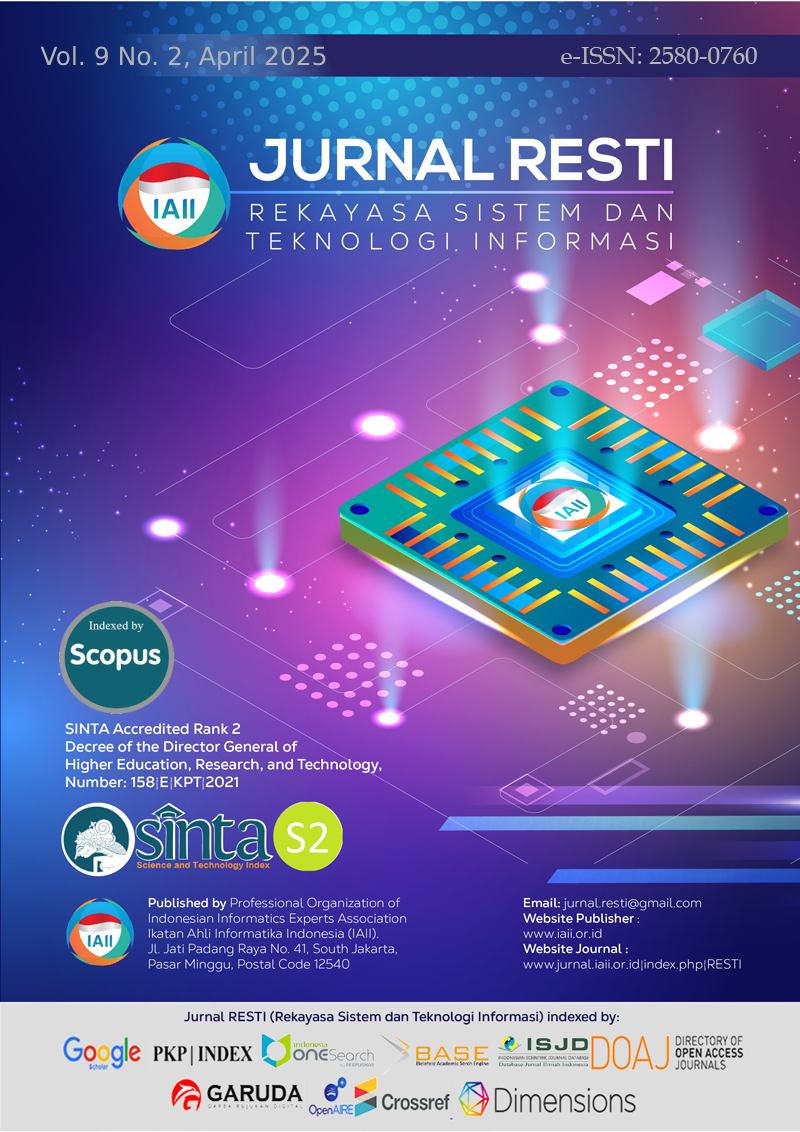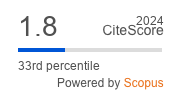Customer Satisfaction Evaluation in Online Food Delivery Services: A Systematic Literature Review
Abstract
The rapid growth of online food delivery services has heightened the need for effective customer satisfaction measurement. This systematic literature review examines 476 papers, selecting 15 key studies to identify prevailing evaluation approaches. Findings reveal that sentiment analysis and PLS-SEM are the most frequently used analytical methods, each appearing in six studies. Satisfaction measurement relies on sentiment polarity scores in five studies and SERVQUAL frameworks in three studies. Data collection primarily involves surveys in seven studies and user-generated content in six studies, but limited demographic diversity reduces generalizability. Three key future research directions emerge. Advanced analytical techniques appear in 5 of 11 future works in the analysis methods domain. Expanding evaluation metrics is mentioned in 6 of 12 proposals in the evaluation domain. Exploring demographic context is highlighted in 10 of 25 recommendations in the dataset’s domain, with dataset development receiving twice the attention of methodological advancements. These results provide researchers with a structured framework for customer satisfaction evaluation while guiding food delivery platforms in refining service quality. By systematically mapping current methodologies and future priorities, this study bridges gaps between academia and industry, ensuring more effective customer satisfaction assessments.
Downloads
References
K. Ahuja, V. Chandra, V. Lord, and C. Peens, “Ordering in: The rapid evolution of food delivery,” McKinsey & Company, vol. 22, pp. 1–13, 2021.
G. J. Negassa and G. P. Japee, “The Effect of Bonding, Responsiveness and Communication on Customer Retention: The Mediating Role of Customer Satisfaction,” Journal of Relationship Marketing, vol. 22, no. 2, pp. 115–131, Apr. 2023, doi: 10.1080/15332667.2023.2191111.
N. Fragkos, A. Liapakis, M. Ntaliani, F. Ntalianis, and C. Costopoulou, “A Sentiment Analysis Approach for Exploring Customer Reviews of Online Food Delivery Services: A Greek Case,” Digital, vol. 4, no. 3, pp. 698–709, 2024.
J. Park, “Combined Text-Mining/DEA method for measuring level of customer satisfaction from online reviews,” Expert Syst Appl, vol. 232, p. 120767, 2023.
C.-C. Cheng, Y.-Y. Chang, and C.-T. Chen, “Construction of a service quality scale for the online food delivery industry,” Int J Hosp Manag, vol. 95, p. 102938, 2021.
I. Osman, E. N. Omar, R. T. Ratnasari, C. Furqon, and M. A. Sultan, “Perceived service quality and risks towards satisfaction of online halal food delivery system: from the Malaysian perspectives,” Journal of Islamic Marketing, vol. 15, no. 9, pp. 2198–2228, 2024.
F. M. Khan and others, “Analysing customers’ reviews and ratings for online food deliveries: A text mining approach,” Int J Consum Stud, vol. 47, no. 3, pp. 953–976, May 2023, doi: 10.1111/ijcs.12877.
D. Arli, P. van Esch, and S. Weaven, “The Impact of SERVQUAL on Consumers’ Satisfaction, Loyalty, and Intention to Use Online Food Delivery Services,” Journal of Promotion Management, vol. 30, no. 7, pp. 1159–1188, 2024, doi: 10.1080/10496491.2024.2372858.
K. Seo and T. Roh, “Online and offline delivery qualities: O2O satisfaction and loyalty through technology acceptance model,” Journal of Retailing and Consumer Services, vol. 82, p. 104079, 2025.
K. Annaraud and K. Berezina, “Predicting satisfaction and intentions to use online food delivery: what really makes a difference?,” Journal of Foodservice Business Research, vol. 23, no. 4, pp. 305–323, 2020.
A. Raza and others, “Give your hunger a new option: Understanding consumers’ continuous intention to use online food delivery apps using trust transfer theory,” Int J Consum Stud, vol. 47, no. 2, pp. 474–495, Mar. 2023, doi: 10.1111/ijcs.12845.
S. K. Trivedi and A. Singh, “Twitter sentiment analysis of app based online food delivery companies,” Global Knowledge, Memory and Communication, vol. 70, no. 8–9, pp. 891–910, Nov. 2021, doi: 10.1108/GKMC-04-2020-0056.
S. Kumar, A. K. Kar, and P. V Ilavarasan, “Applications of text mining in services management: A systematic literature review,” International Journal of Information Management Data Insights, vol. 1, no. 1, p. 100008, Apr. 2021, doi: 10.1016/j.jjimei.2021.100008.
M. S. Hossain, H. Begum, Md. A. Rouf, and Md. M. I. Sabuj, “Investigation and prediction of users’ sentiment toward food delivery apps applying machine learning approaches,” Journal of Contemporary Marketing Science, vol. 6, no. 2, pp. 109–127, Jan. 2023, doi: 10.1108/JCMARS-12-2022-0030.
L. Li, N. Ismail, C. Chong, P. Sun, M. Pervin, and M. S. Hossain, “Customers’ emotional impact on star rating and thumbs-up behavior towards food delivery service Apps,” Journal of Infrastructure Policy and Development, vol. 8, p. 5311, Apr. 2024, doi: 10.24294/jipd.v8i7.5311.
Á. Aldunate, S. Maldonado, C. Vairetti, and G. Armelini, “Understanding customer satisfaction via deep learning and natural language processing,” Expert Syst Appl, vol. 209, p. 118309, 2022.
A. Shankar, C. Jebarajakirthy, P. Nayal, H. I. Maseeh, A. Kumar, and A. Sivapalan, “Online food delivery: A systematic synthesis of literature and a framework development,” Int J Hosp Manag, vol. 104, p. 103240, 2022.
A. Shroff, B. J. Shah, and H. Gajjar, “Online food delivery research: a systematic literature review,” Jul. 2022. doi: 10.1108/IJCHM-10-2021-1273.
A. Shankar and others, “Why do consumers choose online food delivery services? A meta-analytic review,” Int J Hosp Manag, vol. 123, Oct. 2024, doi: 10.1016/j.ijhm.2024.103921.
S. Han and C. K. Anderson, “The dynamic customer engagement behaviors in the customer satisfaction survey,” Decis Support Syst, vol. 154, p. 113708, Mar. 2022, doi: 10.1016/j.dss.2021.113708.
A. H. Ali, T. Gruchmann, and A. Melkonyan, “Assessing the impact of sustainable logistics service quality on relationship quality: Survey-based evidence in Egypt,” Cleaner Logistics and Supply Chain, vol. 4, p. 100036, Jul. 2022, doi: 10.1016/j.clscn.2022.100036.
C. H. Patti, M. M. van Dessel, and S. W. Hartley, “Reimagining customer service through journey mapping and measurement,” Eur J Mark, vol. 54, no. 10, pp. 2387–2417, Apr. 2020, doi: 10.1108/EJM-07-2019-0556.
R. Shahid and others, “Predicting Customer Loyalty in the Airline Industry: A Machine Learning Approach Integrating Sentiment Analysis and User Experience,” International Journal on Computational Engineering, vol. 1, no. 2, pp. 50–54, Jun. 2024, doi: 10.62527/comien.1.2.12.
L. B. -, “Sentiment Analysis in Online Product Reviews: Mining Customer Opinions for Sentiment Classification,” International Journal For Multidisciplinary Research, vol. 5, no. 5, Sep. 2023, doi: 10.36948/ijfmr.2023.v05i05.6090.
M. Campoverde-Molina, S. Luján-Mora, and L. Valverde, “Accessibility of university websites worldwide: a systematic literature review,” Univers Access Inf Soc, vol. 22, no. 1, pp. 133–168, 2023.
R. Destriani, R. Y. Adhitama, D. I. Sensuse, D. S. Hidayat, and E. H. Purwaningsih, “Challenges and Technology Trends in Implementing a Human Resource Management System: A Systematic Literature Review.,” Journal of Information Systems Engineering & Business Intelligence, vol. 10, no. 3, 2024.
N. A. K. Rosili, N. H. Zakaria, R. Hassan, S. Kasim, F. Z. C. Rose, and T. Sutikno, “A systematic literature review of machine learning methods in predicting court decisions,” IAES International Journal of Artificial Intelligence, vol. 10, no. 4, p. 1091, 2021.
N. Z. Maharani et al., “Motivations and potential solutions in developing a knowledge management system for organization at higher education: A systematic literature review,” Journal of Information Systems Engineering and Business Intelligence, vol. 10, no. 2, pp. 270–289, 2024.
A. Agnes, A. T. Hutama, D. I. Sensuse, S. Lusa, and others, “Knowledge Management System Adoption Approach and the Critical Success Factors in Small Medium Enterprise: A Systematic Literature Review,” Jurnal RESTI (Rekayasa Sistem dan Teknologi Informasi), vol. 7, no. 5, pp. 996–1002, 2023.
H. Yang and others, “User Experience Evaluation of Cross-Channel Consumption: Based on Grounded Theory and Neural Network,” Wirel Commun Mob Comput, 2021, doi: 10.1155/2021/1133414.
J. Ahn and others, “Foodservice mobile application quality determinants’ impact on customer satisfaction and repeat usage intentions: The role of perceived risk,” Tourism and Hospitality Research, 2023, doi: 10.1177/14673584231213219.
S. F. K. Tezerjany, “Appraise the role of novelty-seeking on consumers’ satisfaction using online food delivery applications,” International Journal of Quality and Reliability Management, vol. 41, no. 4, pp. 1142–1164, Mar. 2024, doi: 10.1108/IJQRM-11-2022-0341.
P. Meena and G. Kumar, “Online food delivery companies’ performance and consumers expectations during Covid-19: An investigation using machine learning approach,” Journal of Retailing and Consumer Services, vol. 68, Sep. 2022, doi: 10.1016/j.jretconser.2022.103052.
P. M. C. Lin, W. C. W. Au, and T. Baum, “Service quality of online food delivery mobile application: an examination of the spillover effects of mobile app satisfaction,” International Journal of Contemporary Hospitality Management, vol. 36, no. 3, pp. 906–926, Jan. 2024, doi: 10.1108/IJCHM-09-2022-1103.
N. H. Md Saad, F. Mei Nie, and Z. Yaacob, “Exploring sentiment analysis of online food delivery services post COVID-19 pandemic: grabfood and foodpanda,” Journal of Foodservice Business Research, pp. 1–25, Dec. 2023, doi: 10.1080/15378020.2023.2294406.
S. Goyal, S. Chauhan, Y. Gajpal, and A. K. Bhardwaj, “Examining consumers’ continuance and sharing intention toward food delivery apps,” Journal of Enterprise Information Management, vol. 36, no. 6, pp. 1677–1707, Jan. 2023, doi: 10.1108/JEIM-01-2023-0006.
M. Maskey, “Rethinking AI for Science: An Evolution From Data-Driven to Data-Centric Framework,” Perspectives of Earth and Space Scientists, vol. 4, no. 1, p. e2023CN000222, 2023.
M. Preziosi, A. Acampora, M. C. Lucchetti, and R. Merli, “Delighting hotel guests with sustainability: Revamping importance-performance analysis in the light of the three-factor theory of customer satisfaction,” Sustainability, vol. 14, no. 6, p. 3575, 2022.
N. Nivedhaa, “A comprehensive review of AI’s dependence on data,” International Journal of Artificial Intelligence and Data Science (IJADS), vol. 1, no. 1, pp. 1–11, 2024.
Y. Mahajan, V. Mahajan, and M. Kapse, “Marketing Analytics and Consumer Behavior: A Systematic Literature Review for Future Research Agenda,” Data-Driven Decision Making, pp. 151–167, 2024.
O. Badmus, S. A. Rajput, J. B. Arogundade, and M. Williams, “AI-driven business analytics and decision making,” World Journal of Advanced Research and Reviews, vol. 24, no. 1, pp. 616–633, 2024.
B. Kumar, V. S. Badiger, A. Ds. Jacintha, and others, “Sentiment Analysis for Products Review based on NLP using Lexicon-Based Approach and Roberta,” in 2024 International Conference on Intelligent and Innovative Technologies in Computing, Electrical and Electronics (IITCEE), 2024, pp. 1–6.
I. Passas, “Bibliometric analysis: the main steps,” Encyclopedia, vol. 4, no. 2, 2024.
Copyright (c) 2025 Jurnal RESTI (Rekayasa Sistem dan Teknologi Informasi)

This work is licensed under a Creative Commons Attribution 4.0 International License.
Copyright in each article belongs to the author
- The author acknowledges that the RESTI Journal (System Engineering and Information Technology) is the first publisher to publish with a license Creative Commons Attribution 4.0 International License.
- Authors can enter writing separately, arrange the non-exclusive distribution of manuscripts that have been published in this journal into other versions (eg sent to the author's institutional repository, publication in a book, etc.), by acknowledging that the manuscript has been published for the first time in the RESTI (Rekayasa Sistem dan Teknologi Informasi) journal ;








